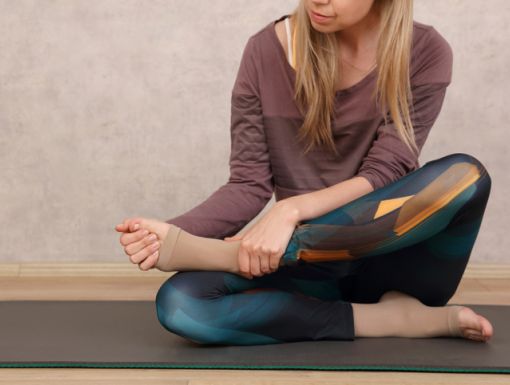
Solving Leg Discomfort: Is Your Pain a Signal of Peripheral Artery Disease?
Have you noticed any changes when you go out for a walk, run or exercise? Do you have painful cramping of legs after a few minutes of physical activity? Peripheral artery disease (PAD) may be the cause of your leg pain and can lead to more serious complications.
What is peripheral artery disease?
Peripheral artery disease is atherosclerosis or hardening of the arteries, which causes narrowing of vessels that carry blood to the legs and feet. If your vessels are blocked, that means your legs are not getting the blood and oxygen it needs to function, which can result in significant disease.
Who is at risk for peripheral artery disease?
Peripheral artery disease affects both men and women. There are many risk factors associated with PAD. A few of these risk factors include:
- Older than age 50
- Smoker or smoked in the past
- Diabetes
- High blood pressure
- High cholesterol
- Family members with Peripheral Artery Disease
What are the signs and symptoms of PAD?
One of the most common symptoms of PAD is pain or cramp that comes on with physical activity and subsides when the activity is stopped. Other signs and symptoms of PAD are:
- Painful cramping in one or both of your hips, thighs or calf muscles after walking, running or climbing stairs.
- Numbness or loss of sensation in foot.
- Coldness in your lower leg or foot, especially when compared with the other side.
- No pulse or weak pulse in the feet or legs.
- Sores (ulcer) in the legs or feet that heal slowly or fail to heal.
- The skin on your legs is smooth and shiny.
- A change in the color of your legs.
How is peripheral artery disease diagnosed?
Diagnosis of PAD begins with a physical exam that includes checking the pulses in your legs. A few ways to diagnose PAD are:
| Blood Tests | A blood test may be performed to check for related PAD conditions such as diabetes or high cholesterol | |
| Ankle-Brachial Index (ABI) | Your doctor may order a simple test called ankle-brachial index (ABI) to compare the blood pressure in your ankle to the blood pressure in your arms. | |
| Ultrasound | An ultrasound of the legs or feet may be performed to determine if a specific artery is blocked. | |
| Angiography | An angiography uses MRIs, X-rays or CT scans to check for blockages in the arteries. A contrast dye is injected into a blood vessel to help arteries show up clearly on the test images. |
What are the treatment options of PAD?
Once diagnosed, peripheral arterial disease can typically be managed with lifestyle changes and medication. It's very important to quit smoking and control high cholesterol, high blood pressure and diabetes.
There are two main goals for PAD treatment. Those goals are:
- Manage the symptoms of PAD such as leg pain so physical activity or exercise is not uncomfortable.
- Improve artery health to decrease the risk of a stroke or heart attack
If an artery is blocked or narrowed, an angioplasty may be scheduled. An angioplasty is a minimally invasive procedure performed to restore blood flow to the legs. Sometimes doctors can do this by passing a catheter into the blocked artery and inflating a balloon or placing a metal stent to open the blockage.
If PAD is left untreated, what could happen?
If PAD is left untreated, symptoms can sneak up on you over time as the buildup of plaque in the arteries occurs gradually. Those who suffer from untreated PAD can develop serious health problems such as:
- A heart attack can occur due to permanent damage to your heart muscles caused by a lack of blood supply to your heart.
- A stroke may happen due to the interruption of the blood flow to your brain.
- A transient ischemic attack (TIA) can occur if there is a temporary interruption in the blood supply to the brain
- Renal artery disease can take place because of the narrowing or blockage of the artery that supplies blood to your kidneys.
- Loss of legs or amputation.
Don’t ignore leg pain! Talk to your doctor if you are experiencing any of the symptoms or signs listed above.



